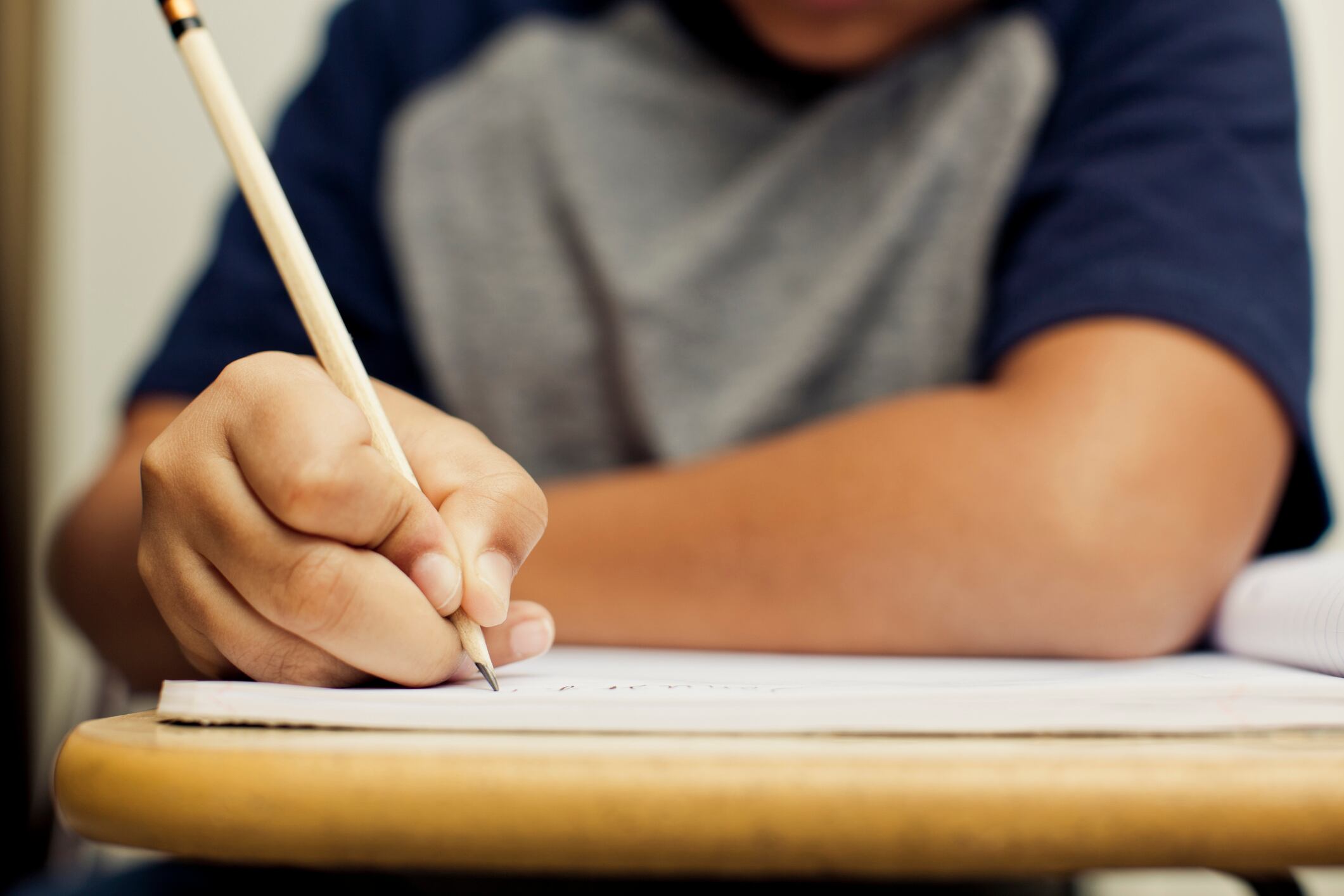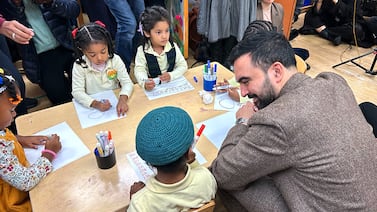Fewer than one in five Chicago third graders met or exceeded state standards in reading and math on a standardized exam given in the spring — when a majority of students were doing most of their learning at home.
That’s compared to citywide proficiency rates closer to 40% in third grade reading and 33% in third grade math in 2019, underscoring the impact of COVID-19 on young learners in the nation’s third largest school district.
The Illinois State Board of Education released district and school-level scores from the Illinois Assessment of Readiness, or IAR, on Thursday. The IAR is the annual end-of-year exam that districts administer to test how well third to eighth grade students are doing in math and English language arts. After waiving the assessment in spring 2020 as schools abruptly shut down due to the coronavirus pandemic, the state saw the 2021 scores as a way to measure the toll that the pandemic has had on students’ learning.
As with statewide scores, which were released in October, Chicago’s results show that, while the pandemic impacted all children academically, it hit English learners, Black students, and children with disabilities the hardest.
To see your school district’s composite score on the English language arts portion of the Illinois Assessment of Readiness, use our lookup tool below.
In Chicago, the IAR results offer the most panoramic view yet of the academic impact from the pandemic since officials in July discontinued the district’s contract with the interim assessment provider NWEA. That decision has raised questions about how district leaders plan to fully take measure of where students are and what academic support they need. The vast majority of schools will proceed with an optional, interim test that is shorter and offers a quicker gauge of math and reading.
Prior to the pandemic, Illinois students had largely flatlined in reading and math, a data point that was already a source of concern. While districts across the state are still assessing learning loss from the pandemic year, initial data from the IAR and SAT shows the number of students overall meeting the state’s learning standards dropped 17.8% in math and 16.6% in English language arts.
Declines were sharpest for third and fourth graders, who officials say struggled the most with remote learning.
Across three emergency relief packages, Illinois school districts will receive about $7 billion in federal dollars for pandemic response. It’s too early for a full accounting of how districts will spend those funds, but at least 20% must go to learning recovery, federal officials have said.
The state board of education has given funding to school districts for programs to address learning loss, high-impact tutoring programs, efforts to close the digital divide, students’ social-emotional health, and hiring more teachers of color.
Districts have so far invested in everything from beefed-up summer school offerings to smaller class sizes in early grades and additional academic specialists and counselors. One intervention gaining traction is high-dosage tutoring, a concept with a growing research backing. State board officials plan to spend $25 million to launch a high-dose tutoring program in early 2022. Chicago Public Schools, which is spending $525 million across two years on a package of recovery efforts, has said it is trying to build an 850-member tutoring corps among teachers and future teachers in educator prep programs.
The federal government gave states the flexibility to administer exams in the spring or fall of 2021. About 90% of Illinois school districts elected to take the exam in spring, but schools struggled to reopen classrooms due to the coronavirus pandemic, resulting in a drop in participation.
In Chicago, more than half of students took the English language arts and math portions of the IAR in 2021. In English language arts, 21.5% of students met or exceeded the state’s standards in comparison to 28% in 2019. In math, 17.5% of students met or exceeded the state’s standards in 2021, while 38% were proficient in 2019.
In third grade, 18.3% of students met or exceeded the state’s standards in English language arts and 18.2% were proficient in math. Third grade is a critical year since it’s the start of statewide literacy assessments, and districts are held accountable for performance on those tests. Educators say that if students are not able to read by third grade, they will struggle to understand the curriculum moving forward.
When asked about the recent test scores, a Chicago Public Schools spokesperson said in a statement that the district was focused on “students engaging with grade-level standards-aligned, culturally relevant instruction.”
The statement continued, “The most important assessments for educators, students, and families during the school year are those closely connected to the curriculum.”
Chicago recently rolled out the Skyline curriculum, which is optional for schools and includes assessments after each lesson, after each unit, and after a sequence of units to help better gauge what students are learning. Still, Pedro Martinez, the district’s new CEO, told Chalkbeat earlier this fall that he was grappling with the lack of consistent assessments across campuses.
Reading, math declines in districts statewide
The percentage of students who took the Illinois Assessment of Readiness varied widely per district, which distorts the picture, since fewer vulnerable students — such as those with disabilities or in temporary living situations — took the tests.
But districts across the board reported declines in the number of students proficient in math and reading.
In Rockford, the state’s third largest school district, where about two-thirds of students qualify for free or reduced lunch, three in four eligible students took the test. Proficiency rates in third grade reading, which were 14% pre-pandemic, fell further.
In Indian Prairie, the fourth largest district, where fewer than one in five students qualify for free or reduced priced lunch, proficiency rates also declined, from 54.2% in third grade reading pre-pandemic to 42% on the 2021 test.
Declines for all students were most pronounced in math, while younger students showed a greater drop in overall scores and English learners saw the biggest drop of all groups, according to state officials.
Dip in SAT scores
Scores on the college-entrance SAT exam slipped for Illinois 11th graders who took the test last spring but not at the same dramatic rates.
Statewide, 33.4% of Illinois juniors demonstrated proficiency in the English Language Arts portion of the test, with just under 30% meeting or exceeding standards in math, compared to rates of 36% in English language arts and 34.4% in math before the pandemic in 2019.
In Chicago, where 86% of eligible 11th graders took the test, a higher percentage of students reached proficiency targets in English language arts compared to math. About one in four students demonstrated proficiency in the reading portion of the test, compared to one in five in math. English language learners, students with disabilities, and low-income students all scored significantly lower.






